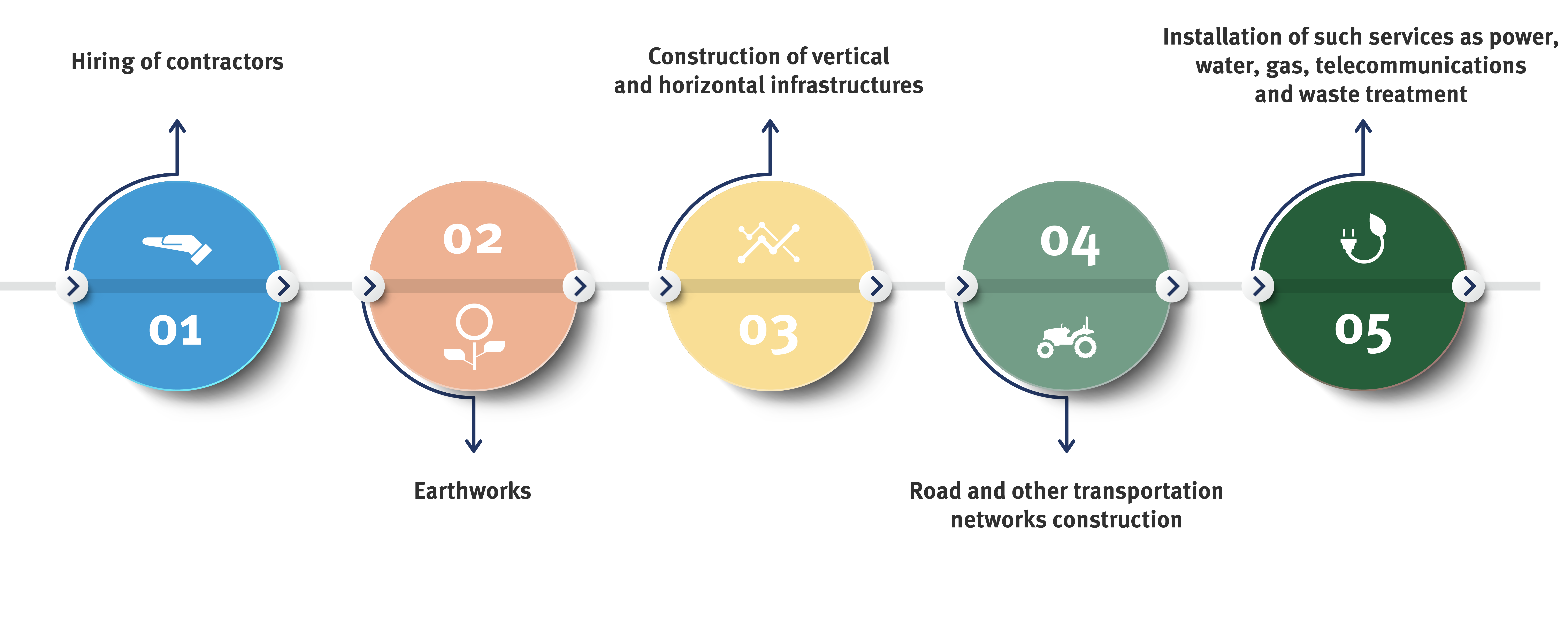The construction phase involves the following activities:

Construction approaches
The modular construction approach is recommended during every stage of the assessment and development of industrial parks and user-friendly planning. Highly modular and compatible design during the implementation stage. An increasing number of projects commissioned globally are adopting the method of modular construction which results in a shorter time frame for development with more costs that are predictable. This approach also has fewer environmental implications since the area of operations are planned efficiently and transported easily. One of the advantages of adopting a modular construction approach is the ability to construct the required structures off-site in the desired workspace before shifting them into the site identified.
The phased development approach facilitates the flow of investment and recalibrates the development, especially the vertical infrastructure to the market needs. In the initial phase, the general approach is to develop all horizontal infrastructure with few essential ready-built industrial structures to facilitate visibility, fulfilling the perceived requirements and trigger SME industrial activities. Fully developed horizontal infrastructure facilities coupled with essential vertical infrastructure in the form of ready-built factories will better enable the marketing of the IPs. During the subsequent phases, the development would encompass the building of additional ready-built industrial structures. Thus, the analysis of project development phasing and computation of investment requirements during each phase of development should be included.
Considerations during park construction
General Considerations: The design and data items should have details on the considerations for construction. Some of the considerations for construction include:
- Identification of major construction materials;
- Study on the sourcing of materials;
- The likely landed cost of key material;
- Construction approvals and permissions from the concerned authorities;
- Construction constraints including allowable construction methods, traffic considerations, environmental restrictions, climate restrictions, blasting limitations etc.,
- Filing and draining considerations if any considering the nature of the site;
- Environment settings understanding;
- Water availability understanding;
- Hydrology parameters understanding if available;
- Excavation on-premises guidelines;
- Damages and delays in development considerations; and
- Termination and suspension of contracts, force majeure clauses and other protection clauses.
Environmental considerations: Construction activities have the potential to impact the environment and communities. Construction management strategies must therefore minimise the adverse impacts of the construction processes on the natural environment and ecosystem and on people. Strategies to reduce these impacts include:
- Risk assessment of the possible impacts resulting from construction;
- Developing a construction management plan outlining the necessary actions to mitigate and manage potential construction risks;
- Procurement of sustainable building materials for use in construction (i.e., those that have the least environmental impact, while still offering the highest technical specifications);
- Maximising opportunities for re-using and recycling construction waste both on-site and off-site;
- Maximising the industrial park’s energy saving potential by using energy-efficient materials and resource-efficient construction practices, including the construction of industrial buildings and installations capable of exchanging energy flows and of enhancing collective heating, ventilation and cooling; and
- Monitoring the implementation of the construction management plan.